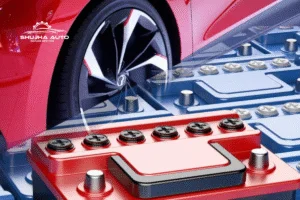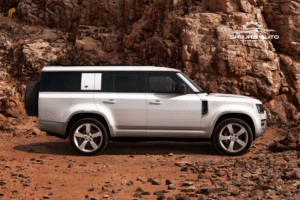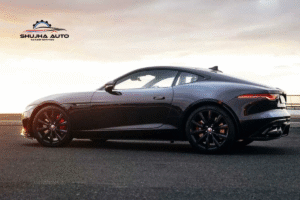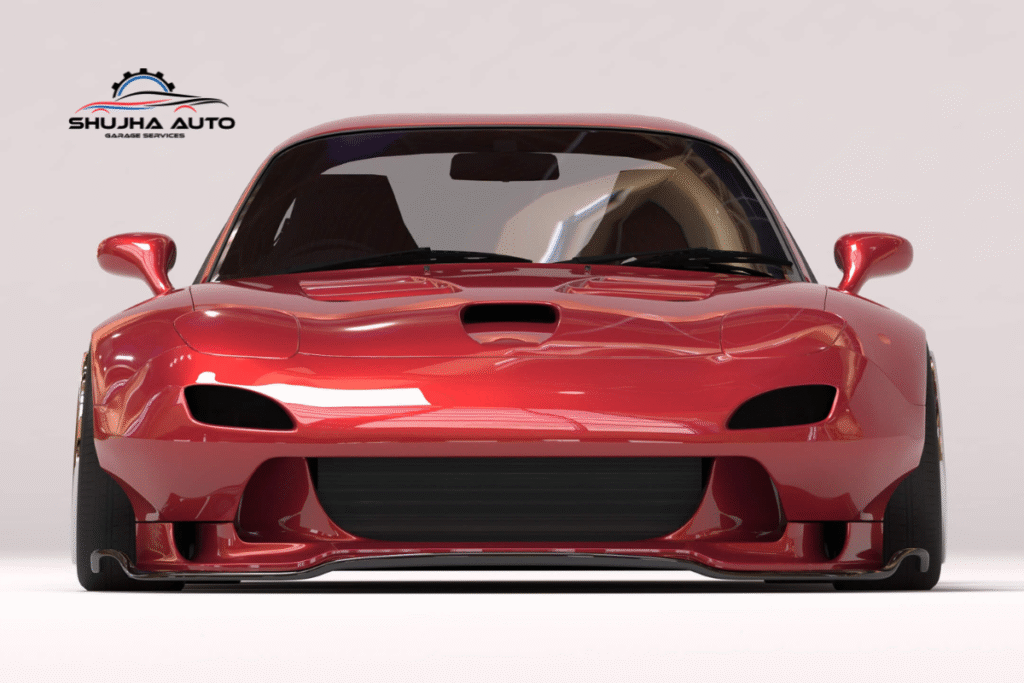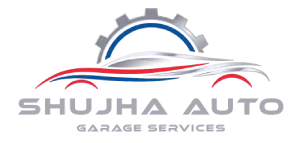Learn how car body kits affect performance and fuel economy exploring changes in aerodynamics, weight, and fuel efficiency before you modify your ride.
Custom body kits can completely change a car’s look, making it sportier, more aggressive, or aerodynamically appealing. But many car owners ask: How do these kits affect actual driving, especially when it comes to Fuel Economy Impact, Suspension & Handling, and airflow like Cooling & Ventilation? Materials also play a role in Increased Weight, potentially offsetting performance gains.
In this post, we examine how body kits alter your car’s performance, economy, balance, airflow, and overall driving experience. We’ll also explain how Shujha Auto Garage Services can help you find the perfect body kit for both looks and function.
What Is a Car Body Kit?
A car body kit includes exterior upgrades like bumpers, side skirts, spoilers, diffusers, and fenders. Kits vary widely—some focus purely on aesthetics, while others aim to improve aerodynamics or performance. Made from materials like fiberglass, polyurethane, or carbon fiber, each option has unique benefits and drawbacks.
The Appeal Behind Body Kits
- Visual transformation: Aggressive looks, wider stance
- Hosting aerodynamic advantages: downforce, air channeling
- Personalization: sets your car apart from the rest
- Potential for performance gains—if designed and installed correctly
The key question: Do these benefits hold up in everyday driving, especially concerning Fuel Economy Impact and real performance gains?
Fuel Economy Impact: How Aerodynamics Change
A body kit changes airflow patterns—sometimes improving, hurting efficiency.
- Kits that reduce drag can help highway Fuel Economy positively
- But boxy or misaligned kits increase drag and reduce highway mpg
- Even fastback-style spoilers optimized for aero may cost you city mileage
A real-life test: A mid-size sedan wearing a quality aero kit saw just 1-2 mpg loss in city driving, but the difference shrank on highways thanks to lower drag. The quality of design matters.
Increased Weight: The Role of Kit Material
Speaking of aero gains, heavier body panels can undo them.
- Fiberglass/Bondo kits weigh more than stock panels
- Increased Weight adds load to the engine and reduces mpg
- Heavier parts also affect braking, handling, and ride comfort
Carbon fiber kits have less Increased Weight, offering better performance off but cost more. Choose wisely to avoid sacrificing the economy.
Suspension & Handling: How Kits Shift Dynamics
A new body profile will inevitably interact with the push of speed and turn.
- Suspension & Handling feel changes when the body sits lower
- Side skirts and diffusers may channel air under the car, affecting grip
- You may need stiffer springs or adjustable dampers to tune out unwanted aerodynamic forces
Proper adjustments can restore or even improve suspension & handling, keeping your ride balanced.
Location: Please Visit Our Shujha Auto Garage
Cooling & Ventilation: Airflow Alterations
Bodykits can change the inflow of air to your engine, brakes, or radiator.
- Cooling & Ventilation could suffer if intakes get blocked
- Some kits offer extra NACA ducts for brake cooling or transmission vents
- Hood scoops may help engine airflow, but need careful fitment
Track users often benefit from enhanced Cooling & Ventilation due to added vents—road cars may not need all the ducting and may lose aerodynamic refinement.
Rear Spoilers & Diffusers: Real-World Effects
- Spoilers add downforce, improving grip—but too much can worsen the Fuel Economy Impact
- Corrugated backgrounds can reduce back pressure, but also create more drag if improperly sized
- Track kits have specific Suspension & Handling demands
- Street kits give style the majority over function—choose wisely
Side Skirts and Splitters: Practical Considerations
Side skirts balance airflow along the frame, while front splitters redirect air, helping reduce lift. But they:
- May increase curb scraping on speed bumps
- Add more exposed surfaces for gravel and everyday wear
- Tie into Suspension & Handling by lowering the center of pressure
Balanced kits have benefits—you may need custom ride height adjustments to complement them.
Reliability and Everyday Use
- Exposure to wear, curbs, and weather can damage kits quickly
- Poorly designed kits may let dirt or water collect, affecting the car
- A smart design lowers curb height and street scraping for daily driving
Suspension & Handling changes might only be subtle, but they matter when returning to the stock design.
Cost vs. Efficiency: Installation and Maintenance
Expenses go beyond purchase:
- Labor costs are significant
- Precision install reduces Fuel Economy Impact and stress
- Extra weight may push you toward new tires, springs, or power tuning
Balance aesthetic upgrades with lasting efficiency.
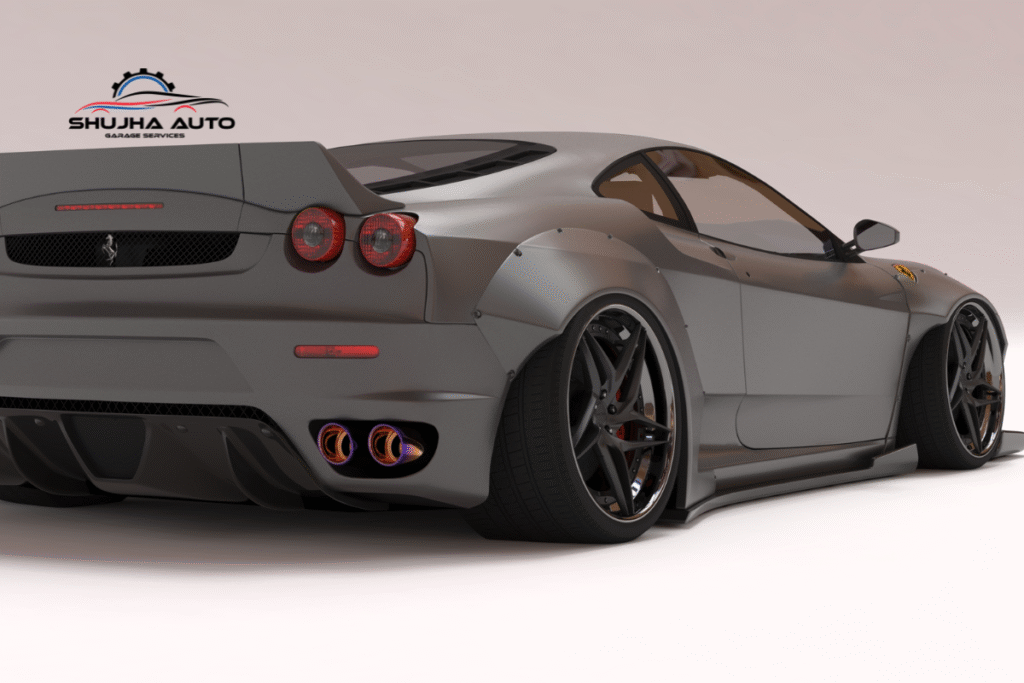
Myth-Busting Common Misconceptions
Myth: “Body kits always improve performance.”
Fact: Only well-designed kits aligned with the entire vehicle system do.
Myth: Kits cut fuel use.
Fact: Ego adds miles—poor designs reduce Fuel Economy Impact instead.
Myth: All kits fit every car.
Fact: Improper fit shifts vehicle balance and suspension & handling unpredictably.
Choose the kit with both parts and performance in mind.
Real-Life Examples and Case Studies
Example on a hatchback: Custom front splitter, side skirts, and wing tested on dyno. Added 5 hp at 160 kph, but dropped highway fuel economy by 1 mpg due to drag.
Sport coupe with splitters and venting kit: Track-ready Cooling & Ventilation system, but required coilover upgrades to preserve suspension & handling.
These show that real change comes well-thought-out installation, not flash.
Suspension & Handling Adjustments You’ll Need
Post-install changes may include:
- Lower spring rates for improved cornering
- Strut bar tightening to limit body roll
- Broken install steps may cause a jerky throttle response
- Tire alignment recalibration is essential after installing long skirts
Even small adjustments preserve handling performance.
Real Fuel Economy Data: Before and After Kits
Mid-size sedan with carbon splitter gained 1 mpg; fiberglass kit cost 2 mpg.
Track-ready coupe lost 3 mpg but gained grip and stability—worth it for users needing performance.
Knowing expectations helps you avoid surprise costs.
Can You Tune to Mitigate Drawbacks?
Yes:
- Use undertray panels to smooth airflow
- Lighten the kit parts for decreased weight
- Re-tune the ECU for altered airflow
- Re-align more frequently to offset aero changes
With tuning, you can balance aesthetics, performance, and economy.
What Shujha Auto Garage Services Offers
Our team helps install and maintain kits with precision:
- Expert fitting and gap calibration
- Scanner checks for aerodynamic drag
- Suspension retuning to match kit upgrades
- Shujha Auto Garage Services ensures your kit both looks and performs
We also align bodywork with appropriate Cooling & Ventilation adjustments when needed.
Final Thoughts
Car body kits are about more than looks—they reshape car behavior. When you consider:
- Fuel Economy Impact from added drag or weight
- Increased Weight from panel materials
- Suspension & Handling changes from the new aero
- Effect on Cooling & Ventilation airflow
You’ll understand that choosing and installing kits thoughtfully is critical. With the right partner, like Shujha Auto Garage Services, you can get style and function working together.
FAQs
Q1: Will a body kit always hurt my fuel economy?
Not always. Thoughtfully designed and tested kits can maintain or even enhance airflow.
Q2: Do I need to replace my suspension after installing a kit?
Not always. But adjustable components or recalibration often help preserve handling.
Q3: Will my car remain street-legal with aftermarket body parts?
Yes—when installed to OEM-spec height, visibility, and with no sharp edges.
Q4: How should I wash a car with a body kit?
Use guarded underbody rinses and low-pressure soaps to avoid damage to skirts or diffusers.
Q5: What sets Shujha Auto Garage Services apart?
We combine aesthetic installation, performance calibration, and real-world durability for long-lasting results.

